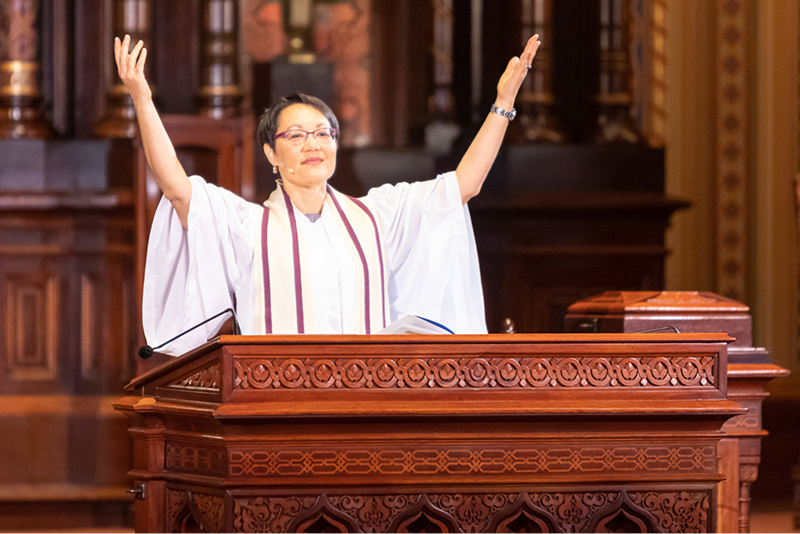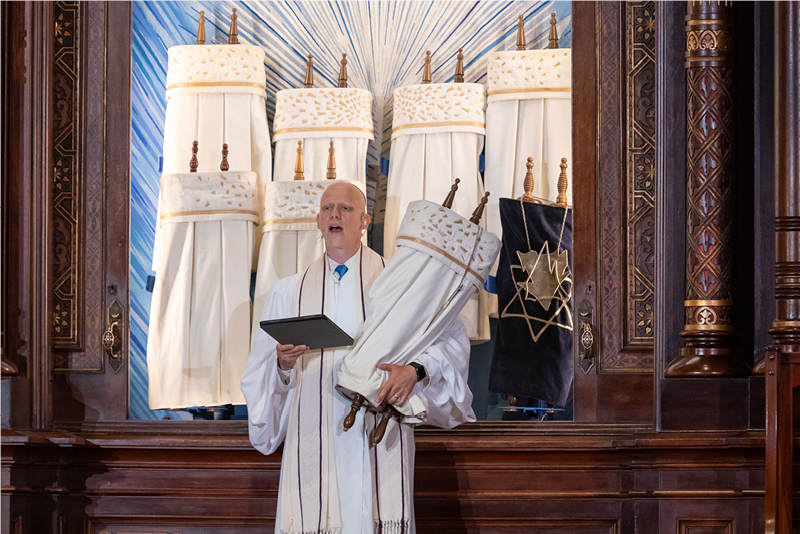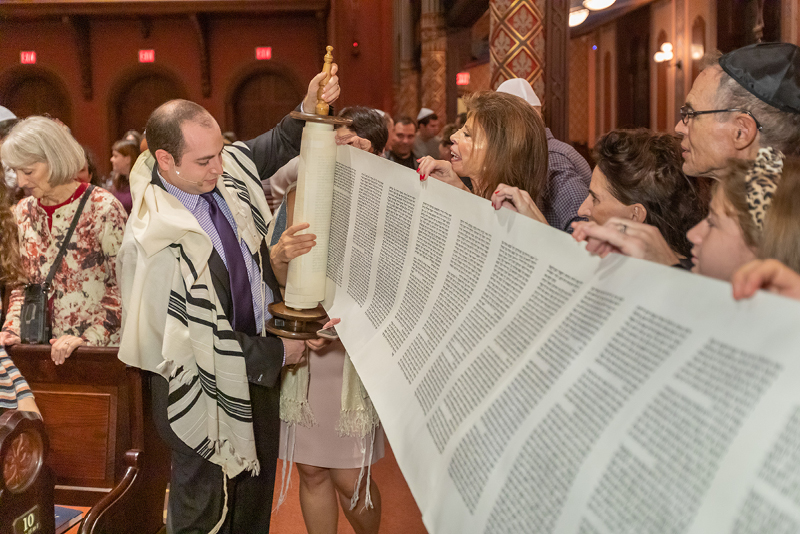High Holidays
High Holidays
Rosh HaShanah and Yom Kippur routinely get top billing during the High Holy Days, but it is truly a season that starts in the Jewish month of Elul, which usually begins in mid-August, a month before Rosh HaShanah. Elul marks a season of reflection. We take stock of our lives and look back at where we have been over the past 12 months.
While Elul is a time for individual work, Rosh HaShanah reminds us that we must also take stock as a community and commit ourselves to acts of tzedakah (justice) and tikkun olam (repairing the world). When Yom Kippur comes around 10 days later, each of us is obligated to have asked for forgiveness from those whom we have harmed so that we may do the real work of teshuva (repentance)—figuring out how we are going to engage in deep change, both with ourselves and with our community.
Rosh HaShanah
Rosh HaShanah, which in Hebrew it translates to “head of the year,” marks the start of the Jewish New Year. It’s a time marked celebration and reflection. Here at Central Synagogue, Rosh HaShanah and Yom Kippur services are our most attended services of the year. They fill our Sanctuary and require us to find additional places to come together to worship on these days. We also gather as a community on the afternoon of Rosh HaShanah at the East River and 56th Street in Manhattan for a uniquely moving Tashlich. During this ritual, we toss bread into the river, a symbol of casting away our sins from the past year. Performing this ancient ritual against the backdrop of our great city is a truly special experience.

Yom Kippur
Yom Kippur, or “day of atonement” in Hebrew, is a holiday that culminates ten days after Rosh HaShanah with rituals of fasting, repenting, and asking for forgiveness. At Central, we invite congregants to anonymously share the sins they have committed over the past year. These are then collected by Central Clergy, who create a customized Al Cheit (the sin) ritual on Yom Kippur afternoon that reflects the confessions from our entire community.

Sukkot
Sukkot in Hebrew means “booths” and celebrates both the period of time during which the ancient Israelites lived in temporary booths as they traveled from Egypt to Israel and the end of the harvest season. In past years, Central typically has had three sukkot in our community house, each lovingly decorated by our children: one in the lobby, one on the patio of the second floor, and one on the roof. Throughout the week we hold services, classes, and other programs in our sukkuh, and congregants are invited to sit or dine in the sukkuh during regular synagogue hours.
Sh’mini Atzeret and Simchat Torah
Sh’mini Atzeret is a celebration that occurs on the eighth day (sh’mini means eight, atzeret means celebration), the day following the seven-day holiday of Sukkot. Simchat Torah in Hebrew means “the joy of Torah.” Reform Jews celebrate and recognize these holidays simultaneously by reading the last passage and first passage of the Torah. At Central, we unfurl the entire Torah scroll in the Sanctuary each Simchat Torah evening. Afterwards, we invite everyone to the Pavilion for dancing and a festive kiddush.
